6 more leading trial lawyers share secrets of effective opening statements
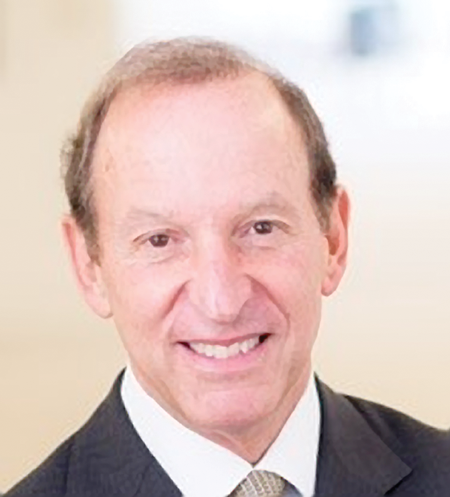
Abbe Lowell. Photographs courtesy of the authors.
Most of us know the essential elements of an effective opening statement: Tell a good story, weaving the evidence with themes that will resonate with the jurors’ common sense and life experiences. But what’s the best way to do that? Bang the table or shoot the breeze? Attack immediately or hold your fire? Most important, how can you connect with the jury—a panel of strangers who can’t talk back but who will determine the fate of your case?
To answer these questions, I asked 11 renowned trial lawyers to share their secrets to a great opening. Their responses, in slightly edited form but in their own words, provide an invaluable glimpse into the art of persuasion.
It’s worth pointing out that the techniques that work for one lawyer may not work for others. Some of the advice is even contradictory. For that reason, it’s important that, as a trial lawyer, you find your own path. Develop a style and a courtroom demeanor that suit you and let your unique personality shine through. Let the jurors get to know the best side of you as they learn about your case.
Part one of this package was published in the February issue of the ABA Journal. Here is the second part.
ABBE LOWELL: REMEMBER WHAT MOM TOLD YOU
Abbe David Lowell is a partner at Chadbourne & Parke in Washington, D.C., and heads up the firm’s litigation department. Lowell is one of the leading white- collar defense and trial lawyers in the United States. He served as chief minority counsel during impeachment proceedings against President Bill Clinton; and from 1994 to 1996, he served as special counselor to the U.N. high commissioner for human rights during investigations of violations of international law in Rwanda and the former Yugoslavia.
Many of us heard this advice for the first time from our mothers: “You don’t have a second chance to make a first impression.” Opening statements are likely the first time (except for the rare attorney voir dire) a jury will hear a client’s story and your voice. To make the most of the opportunity, don’t waste time. Too many attorneys waste too much time explaining standards of proof or the history of juries or some other dry and generic topic. Whatever the main theme of the case may be, get to it quickly and describe it memorably.
In defending former North Carolina Sen. John Edwards in 2012, when he was tried in federal court on a novel theory of campaign law violations stemming from alleged payments made to his paramour, we told the jury as we eventually pointed to the Bible on the witness stand and the law books on the prosecutor’s desk: “This case represents the difference between a sin and a crime.” That was a main theme throughout the trial, and setting it out on Day One laid the foundation for every witness examination, the closing argument and what jurors said afterward. And that helped guide them to their favorable verdict.
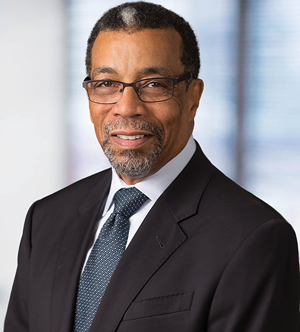
Billy Martin
A close corollary is to tell jurors about a key piece or pieces of evidence that will prove your theme. This reinforces the theme and, just as important, establishes you as the director of the events they will see and hear about.
Too many lawyers treat openings as laundry lists to try to describe all a jury will hear and see. No book, movie or play tells the audience everything in the opening chapter or act. Doing so would present too much information to absorb and would cause the reader or watcher to lose interest too fast.
BILLY MARTIN: CONNECT WITH THE JURY
A veteran of more than 150 trials who is consistently named one of the top lawyers in the nation, William R. “Billy” Martin is a principal at Miles & Stockbridge in Washington, D.C., where he represents large corporations in complex civil and white-collar criminal matters. Before entering private practice, he was a state and federal prosecutor in San Francisco and Washington, where he served as executive assistant U.S. attorney for the District of Columbia.
The opening statement presents the first opportunity for trial counsel to speak to the jury as a unit. Jury selection has been completed and the court may have permitted counsel to ask a few relevant questions of some jurors during voir dire, but this is the first opportunity you as counsel have to speak to the jury as a group and not as individuals.
Tailor your presentation to the people now seated in the jury box. While it is not unusual to find professionals sitting on a jury, your presentation, if possible, should be made using words and expressions that can be understood by jurors who do not have advanced or even college degrees.
Some lawyers say using visual aids may detract from your presentation. In this day and age, however, many jurors expect lawyers to use visual aids in court. Be mindful not to bore the jury with aids while delivering your opening statement, as it may affect your credibility throughout the case.
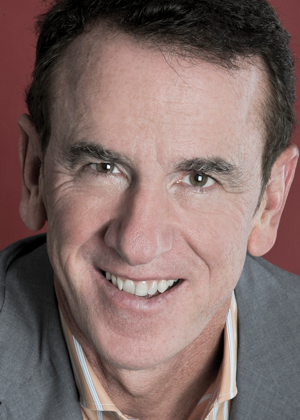
John Quinn
Highlight the weaknesses of your opponent’s case, and tell the jury why the evidence supports your client’s case. At the conclusion, tell the jurors what you are asking them to do—render a verdict on behalf of your client. Remind jurors that you will have one other opportunity to speak with them directly, during closing arguments, where you will renew your request that, based on the evidence in the case, your client is entitled to a favorable verdict.
JOHN QUINN: DROP A BOMB
John B. Quinn is the Los Angeles-based founding partner of Quinn Emanuel Urquhart & Sullivan. He is one of the most widely acclaimed business trial lawyers in the United States. He also serves as general counsel to the Academy of Motion Picture Arts and Sciences, which sponsors the annual Academy Awards.
Jurors are just like the rest of us—in a mad dash to make sense of things, including the case they are hearing. Once they have formed that sense, they spend the rest of the trial seeing whether the evidence fits it.
A mind is a terrible thing to change. People prefer and defend their understanding of things. They attempt to fit the evidence to it with ever-increasing fervor. The opening is the invaluable opportunity to make your opponent change jurors’ minds.
When on defense, I am a great believer in Herbert Stern’s teaching that you should try to start with a bomb. (Stern is a criminal defense attorney in New Jersey and author of Trying Cases to Win.) The jury is often so biased by the time you rise that you must concisely raise distrust of your opponent’s overall reliability and candor, or nothing wonderful can follow. The bomb usually takes the form of specific evidence that the plaintiff “chose not to show” and “never mentioned.”
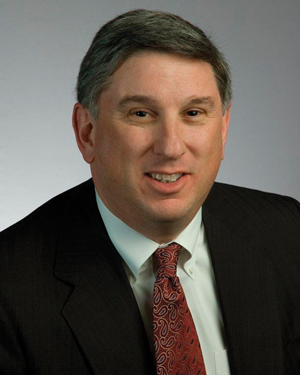
Howard Shapiro
In general, a defense opening should be closely tied to shows of evidence to relieve jurors of needing to trust you as you supply the “you-can’t-trust-lawyers” experience—which recalls the admonition I may most regret sharing: Include the worst facts.
Those things the jurors will take as true must be a part of the story of why your client is right. Don’t address them as problems. Incorporate them. They can be trivial, so long as they’re organic. With the air out of the balloon when your opponent tries to pop it, instead of shock, jurors can think: “And? Got anything to add?”
Last, use “mocks,” practice runs in front of colleagues, for your opening. Don’t guess what people accept, expect, understand and reject. See. Watch the chastening spectacle in the laboratory where judgments are made but never entered. Debriefing—getting participants’ thoughts on why they think things—is not so useful, though it may strike a creative chord in you.
HOWARD SHAPIRO: IT’S ALL ABOUT THE STORY
Howard M. Shapiro is a partner at Wilmer Cutler Pickering Hale and Dorr in Washington, D.C., where he chairs the firm’s litigation/controversy department. He focuses on white-collar criminal defense, complex commercial litigation and securities enforcement. Previously, he served as an assistant U.S. attorney in the Southern District of New York and as general counsel to the FBI.
The key to a successful opening is a compelling and coherent narrative—or, for the defense, a compelling counternarrative—that is built around a simple, engaging and forceful presentation of the theme of your case. The goal is to craft a lens through which the jury will see the evidence that provides the jurors with a view of what happened that leads inexorably to your desired outcome. The details matter less; the story is all.
BRENDAN SULLIVAN: JURORS SHOULD WANT YOU AS THEIR LAWYER
Brendan V. Sullivan Jr. is a senior partner at Williams & Connolly in Washington, D.C. A litigator for 45 years, he focuses his practice on white-collar criminal defense, complex commercial litigation, defending law firms in malpractice cases, and products liability and mass tort litigation. His clients have included Oliver North, former HUD Secretary Henry Cisneros and U.S. Sen. Theodore F. “Ted” Stevens Sr. of Alaska. He is widely recognized as one of the most able trial lawyers in the country.
Here are 10 things to remember about opening statements:
1. Your first goal is to show the jury that you are professional, articulate and nice. You should present your story of the case in a way that makes each juror conclude: “I want that lawyer, if I ever need one.”
2. Demonstrate to the jury that you actually believe that your client is in the right and that if your client does not prevail, then justice will not have been served. You can’t say those words, of course, but your attitude and your sincerity will get the message across.
3. Never say anything bad about the opposing lawyers during opening statements. Jurors don’t like that early in the case.
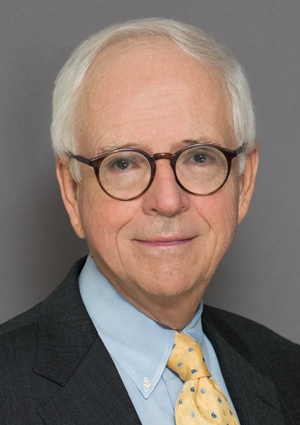
Brendan Sullivan
4. Never overpromise. You’ll regret overstatements when, at closing, the other lawyer says, “Counsel promised you this, but he/she did not deliver.”
5. Remember that the facts and the law are important, but it is your credibility that can make the difference in the outcome.
6. In a criminal case, never say that your client will testify, even if you are 99 percent certain it will happen. You may not be able to recover from this broken promise.
7. You must repeatedly tell the jury that the government will not be able to present sufficient evidence to prove its case beyond a reasonable doubt. Say it enough times that when you hammer it home during your close, it will sound familiar, and it will be consistent with your opening.
8. The government will likely call a witness who you will demonstrate has twisted, to the point of obliteration, the truth. You must alert the jurors that they will hear from a liar, and that you will show them how the witness lies and why. Hold the details. Just alert them that there are likely to be fireworks. This may make the jurors skeptical when they first hear that witness, leaving them with an open mind about your expected impeachment.
9. Be professional. Never ingratiating. Never sickeningly sweet. That turns jurors off.
10. Be firm and gentle in opening, so that when you close and pound the table with certainty about your client’s position—or innocence—you will not be seen as a raving maniac from start to finish. Save it for the right moment at closing. Never do it at opening.
REID WEINGARTEN: MARK KNEW WHAT TO DO
Reid H. Weingarten, a partner at Steptoe & Johnson in Washington, D.C., is one of the nation’s top white-collar criminal defense lawyers. His clients have included former U.S. Commerce Secretary Ronald Brown, former Agriculture Secretary A. Michael Espy and former Teamsters President Ronald Cary.
Some things about opening statements are axiomatic: Tell a compelling story. Don’t stretch the facts and get called out for the stretch later. If you go first, know your materials cold; if second, know them cold but also respond to your opponent’s opening at least a little.
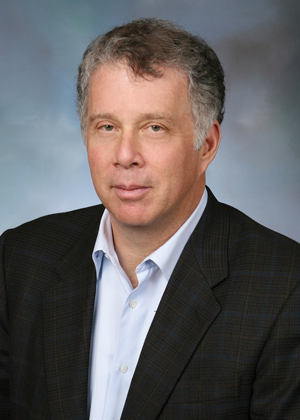
Reid Weingarten
Lately, I have borrowed a favorite tactic of my late, and much-missed, partner, Mark Hulkower, in my defense openings in federal criminal trials. (Hulkower headed up Steptoe’s white-collar defense group prior to his death in 2011.)
I identify and emphasize a critical issue where I have the upper evidentiary hand. Then I dramatically step away from the podium, point to the floor and say with a flourish, “I am going to put down a marker. I am going to prove X, Y and Z when these prosecutors say it is A, B and C. Woe to me if I don’t. This is not just a lawyer’s hot air. I have to come back to you after the evidence for closing argument, and if I have not proven X, Y and Z, give me the stink eye or, worse, don’t look at me at all. But if I do prove X, Y and Z, you know what it means for the government’s case.”
It’s a high-risk strategy to be sure—and I’m on a nice winning streak. Thank you, Mark.
Allison Leotta is a former federal prosecutor in Washington, D.C., and the author of five novels. This article originally appeared in the March 2017 issue of the



